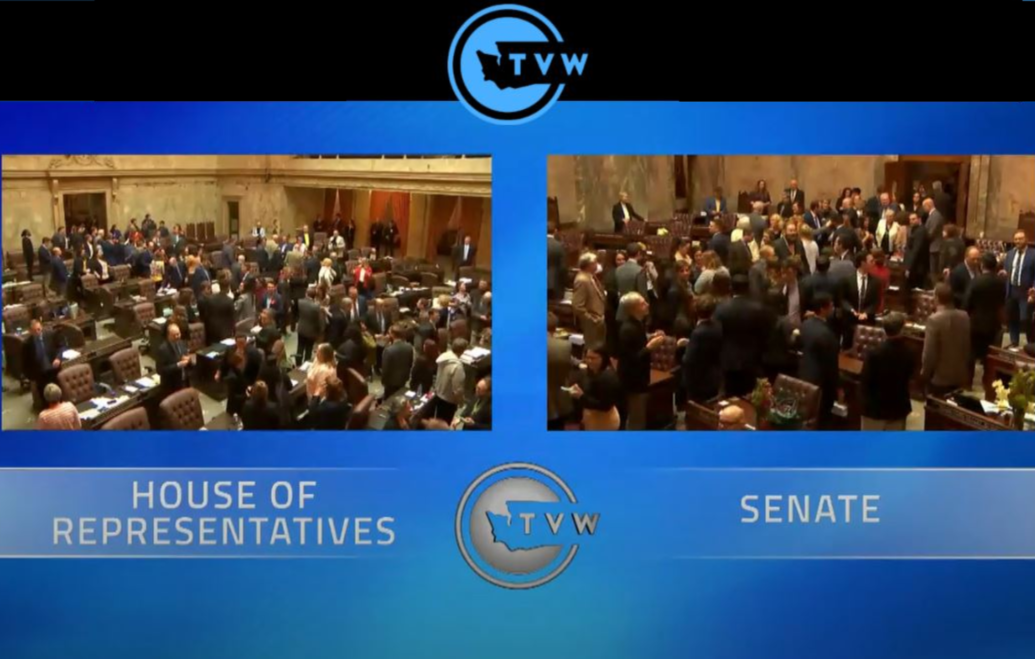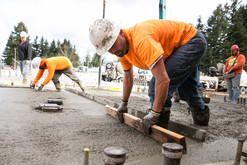Friends and neighbors,
I am sending you a quick update after taking a couple of days to recover from some very late nights and marathon floor sessions, including debating bills until sunrise on Saturday. But it was all worth it because we adjourned right at midnight! The last time the Legislature finished on time in a budget year was 2009.
Click on the image below to watch the Sine Die ceremony.
 |
There’s so much to report on these 105 days, that I can’t pack it all in one newsletter, so we’ll break it up in installments. Expect future reports on healthcare, debtor protections, environmental victories, and other issues.
In this newsletter, you’ll find summaries of our major investments in the operating, transportation and capital budgets. The policy choices guiding those investments came from taking into account testimony in committee hearings and from meetings with stakeholders. There is never enough money to enact every good idea or to address every need. Agreement on how to meet the state’s needs was hard-fought late into many nights. Nobody likes taxes, but we all benefit from the infrastructure and services they pay. I stand by the values of putting people first and I am committed to working on improving the fairness and sustainability of our tax system.
Passing a budget that puts people first
The operating budget and revenue package we passed pays for many of the operations of our state government, including making critical investments in behavioral health, affordable housing, education, and the environment.
Highlights of the $52.4 billion two-year operating budget include:
Behavioral Health: The two-year budget will make significant investments in continued efforts to reform and improve the state behavioral health system.
- $47 million to expand community behavioral health beds and services.
- $92 million in this biennium to ensure the stability of state hospitals and the safety of patients and staff.
Affordable Housing: In addition to the state capital budget, the state operating budget makes key investments in housing programs and services.
- $15 million focused on permanent supportive housing and youth homelessness.
- $14.5 million for the Housing and Essential Needs Program, which helps people with disabilities who are struggling to find or maintain housing.
Education:
- $155 million for additional special education funding ($294 million over four years).
- $61 million for additional levy assistance for areas with low property values.
- $12 million for paraeducator training.
- $2.5 million additional funding for student mental health and safety.
Workforce Education Investment: Creates a new Washington College Grant to make public college tuition-free in Washington state for families earning less than $50,000 per year, with partial scholarships for families up to state’s median income, and significantly invests in community colleges.
Other investments:
- $35 million to expand Early Childhood Education and Assistance Program (ECEAP) slots and rate increases.
- $31 million to improve habitat and protect Orcas.
- $9 million to eliminate the backlog in testing sexual assault kits.
- $24 million in state general funds to increase our wildfire response and address natural disasters.
- $4.5 million to expand rural broadband.
Keep Washington Moving
The House passed a transportation budget with bipartisan support that will allocate more than $9 billion in much needed funding to Washington State’s transportation network.
The budget helps maintain our transportation infrastructure, supports jobs, and addresses key traffic and transportation problems that affect working families all over the state.
 |
An interactive map of transportation projects is available if you are interested in finding out more about the projects that may affect you. Some of them are also included in our Special Budgets Edition Newsletter.
Highlights include:
- Green transportation investments, including constructing and converting to hybrid-electric ferries.
- Corridor improvements for major highways like I-5 through JBLM and I-405 from Renton to Bellevue and starting work on a replacement Columbia River bridge that is the main link between Washington and Oregon. Click here for more information on the bridge project. Making changes to major thoroughfares will help connect Washington and carry people and goods across our state.
- Getting people out of their cars through investments in passenger rail service, encouraging development around transit hubs and other options.
Addressing our transportation needs is important as Washington’s population grows. The budget passed by the legislature takes strong action to keep Washington moving.
Building Washington
Every two years the state passes a capital budget that pays for construction and infrastructure projects that keep Washington a great place to live, work and raise a family. They include school buildings, affordable housing, mental health facilities, and state park improvements, among many others.

This bipartisan budget invests $4.9 billion in Washington’s future. Highlights include:
You can look at the full details of the construction budget using the mapping tool to find out about projects happening in our area. For reference, you can also find some of those projects in the 49th District Budgets Newsletter from the first week of April. |
Campaign Contribution Limits in All Port District Races
On April 23, Governor Inslee signed my bill to bring uniformity on campaign contribution limits to all port district races in the state.
 |
There are seventy-five port districts in Washington, ranging from the big ones that everyone’s heard of, to little tiny places that you only know about if you live in the area. Big or small, port districts operate seaports and airports, marinas and industrial properties all over the state. Most of the time, port district races don’t generate a lot of activity or draw much attention. In recent years, however, we’ve seen some contentious port district races that have galvanized entire communities.
In 2013, over $150,000 were spent on the Port of Bellingham race. That figure increased to $185,000 in the 2017 race. Eyebrows were raised in both cases, but the one that really shook things up was the Port of Vancouver race two years ago. You’ll remember that a single industry spent over a million dollars on that one! It was unheard of but legal, because current law limits campaign contributions only for port districts that have over 200,000 registered voters. The Ports of Seattle and Tacoma are the only ones that fall under that description.
To level the playing field, I introduced this legislation last year, but it failed to pass before the cutoff deadlines. It was important to bring it back this session because 2019 is a port district election year and every port in the state will have at least one commissioner on the ballot.
Campaign contribution limits are good policy for all port district races because, as public entities, ports are accountable to the public, not special interest groups.
Thank you for reading my newsletter. Now that session is over, I am in district most of the time so if you want to talk, be sure to contact my office, let’s get together for coffee!
Sincerely,

